Quote & Buy
Car Insurance
Home Insurance
Business Insurance
Other Products

How to drive like a
Good South African
Review the analysis of SAs favourite artists and
uncover the most & least distracting driving songs.
Get affordable Car Insurance from Budget
Insurance.
How to drive like a
Good South African
Review the analysis of SAs favourite artists and uncover the most & least distracting driving songs.

Get affordable Car Insurance from Budget Insurance.
Admit it. We all transform into rock stars when our favourite song blasts through the speakers while driving.
Admit it. We all transform into rock stars when our favourite song blasts through the speakers while driving.
Suddenly, your foot is a little heavy on the accelerator. You’re displaying serious car-dance moves while drumming your fingers against the steering wheel as you enthusiastically belt out the off-key lyrics. But be warned! Music has magical powers and can turn a mild-mannered driver into a car-rocking menace in no time.
Suddenly, your foot is a little heavy on the accelerator. You’re displaying serious car-dance moves while drumming your fingers against the steering wheel as you enthusiastically belt out the off-key lyrics. But be warned! Music has magical powers and can turn a mild-mannered driver into a car-rocking menace in no time.
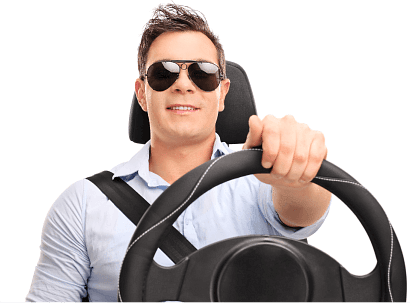
So begs the question: Does music choice affect our driving behaviour?
Budget Car Insurance believes that it does and undertook research using Spotify’s 2023 wrapped data to analyse South Africa’s favourite songs and artists to determine the most and least distracting songs and albums to listen to while driving.
Moreover, Budget has mapped the best drivers by province, based on Budget Car Insurance claim/accident data. So, stay safe and Drive Like a Good South African with Budget’s recommended playlist and expert tips.


Let this playlist be your roadie!
Forget the road rage tantrums and embrace the soothing albums of Summer Walker's 'Last Day of Summer’ and Brent Faiyaz's 'Wasteland’. Keep it local, as Mas Musiq's 'Nini na Nini' brings the Yanos to life, while Kelvin Momo's 'Amukelani' levels up the journey with top-tier Amapiano energy. Not forgetting all the hip-hop heads, A-Reece's 'P2' serves hip-hop therapy.
Each of our top 15 artist’s albums has an average distraction score under 60, so you can buckle up, hit play, and drive through life with the perfect soundtrack!
Forget the road rage tantrums and embrace the soothing albums of Summer Walker's 'Last Day of Summer’ and Brent Faiyaz's 'Wasteland’, or level up the journey with top-tier Amapiano energy with Kelvin Momo's 'Amukelani'. Each album has an average distraction score under 60, so you can buckle up, hit play, and drive through life with the perfect soundtrack!
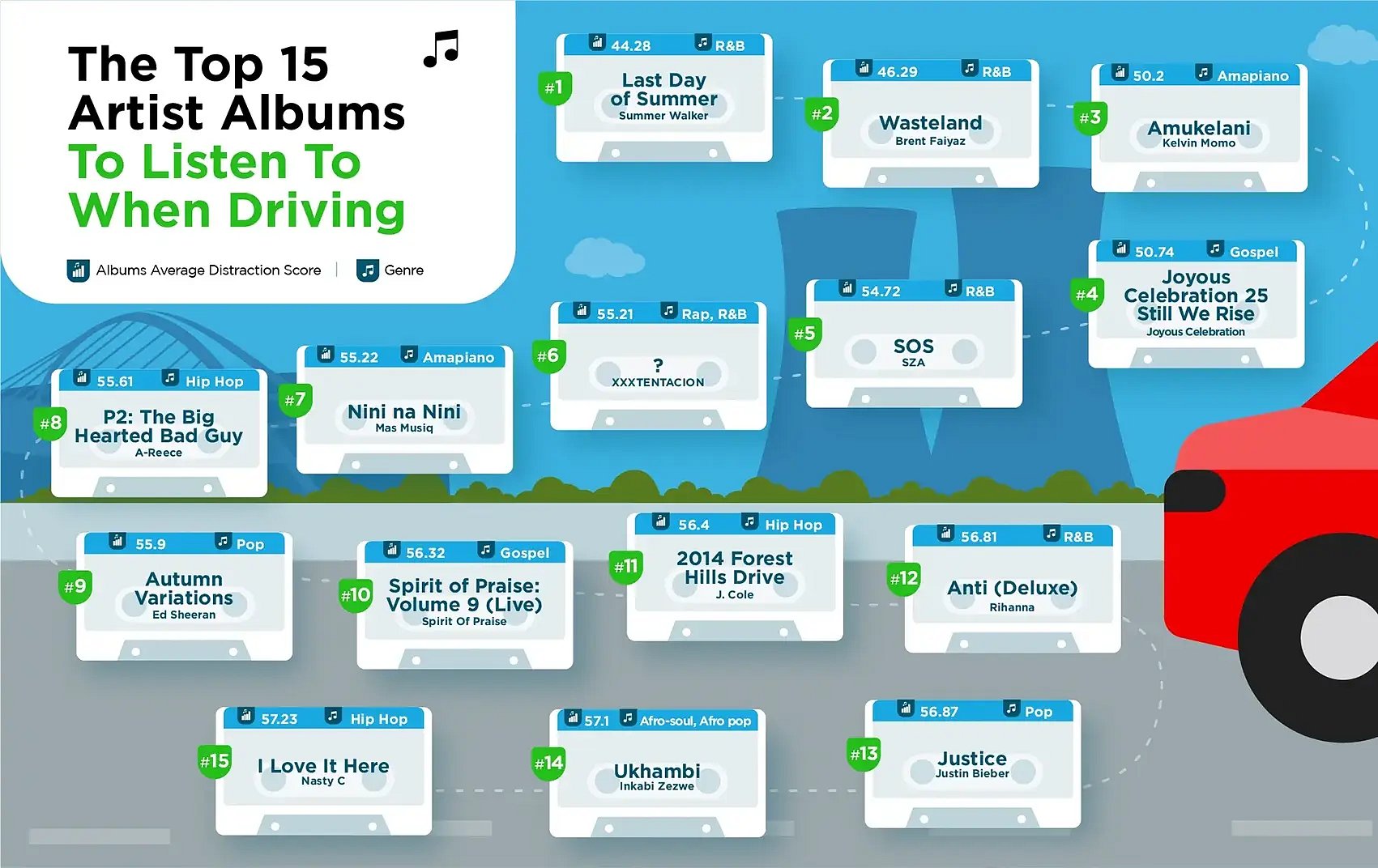
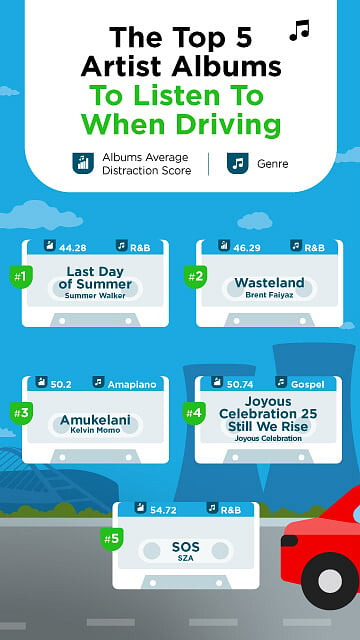
Caution: these albums might turn your car into a roller coaster of chaos!
Young Thug's 'Business is Business' could head the traffic distraction parade, making you question if you're driving or competing in a rap battle. Not a good idea in rush-hour traffic. Doja Cat's 'Scarlet' follows suit, adding a feline twist to the mayhem. Kabza De Small's 'Isimo' brings Amapiano to the list, turning your commute into a dance-off—on wheels! Future's 'Wait For You' may make you anything but patient with its beats, while Beyoncé's 'Renaissance' could turn you into the lead singer at your own private concert. Brace yourself as these artist’s albums have average distraction scores over 60, so can turn your car into a festival of distractions – drive at your own risk!"
Young Thug's 'Business is Business' could head the traffic distraction parade, making you question if you're driving or competing in a rap battle. Not a good idea in rush-hour traffic. Doja Cat's 'Scarlet' follows suit, adding a feline twist to the mayhem. Kabza De Small's 'Isimo' brings Amapiano to the list, turning your commute into a dance-off—on wheels! Future's 'Wait For You' may make you anything but patient with its beats, while Beyoncé's 'Renaissance' could turn you into the lead singer at your own private concert. Brace yourself as these artist’s albums have average distraction scores over 60, so can turn your car into a festival of distractions – drive at your own risk!"
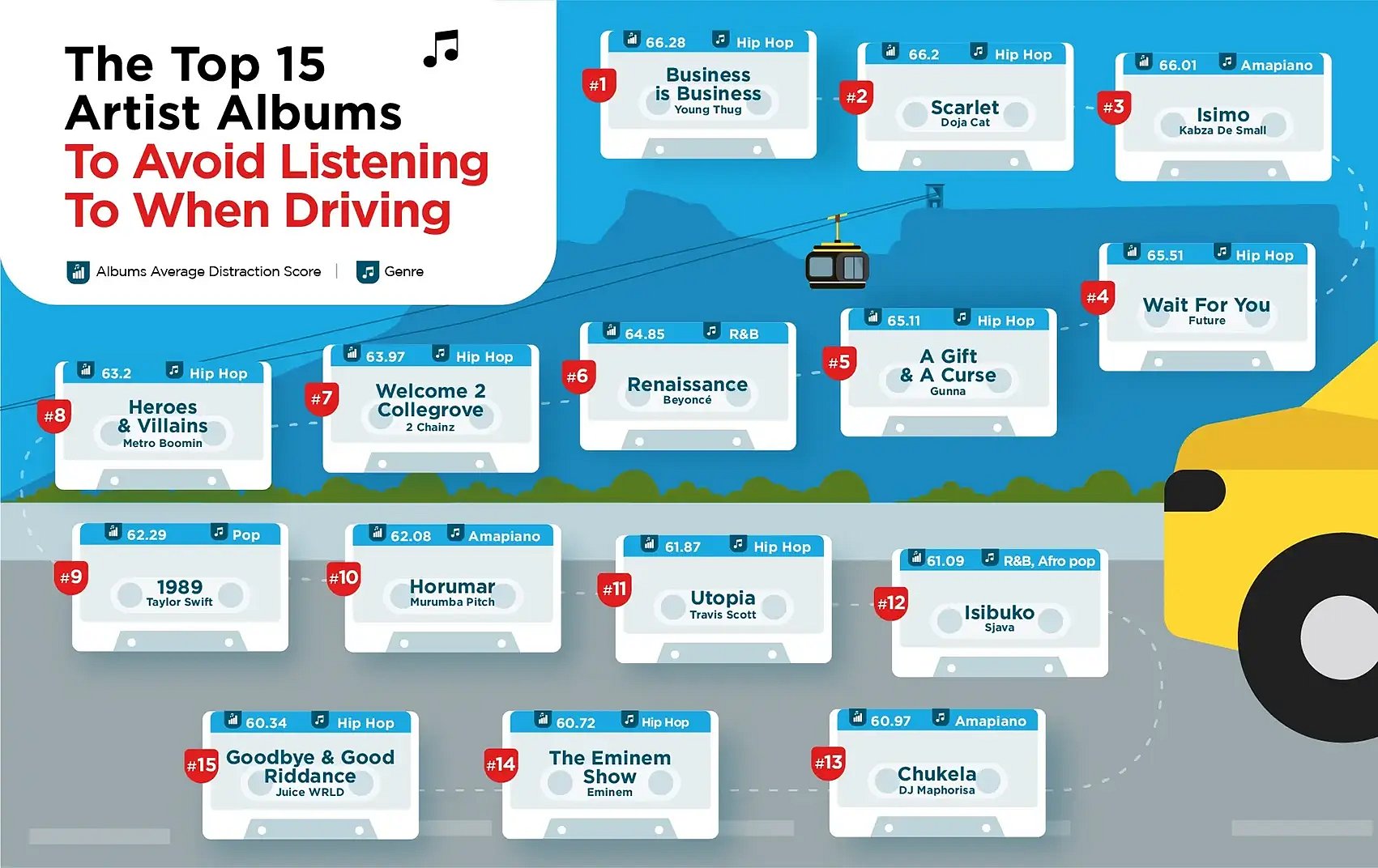
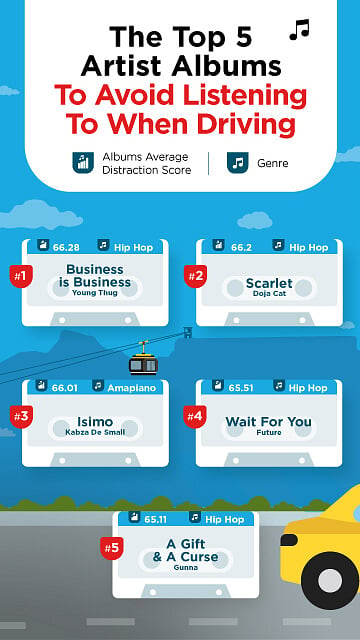
Looking for the perfect driving songs that won't turn your commute into a circus?
Say hello to 'Yahyuppiyah' by Uncle Waffles. The Amapiano anthem has the lowest distraction score of 33.92% and is so smooth it makes your car feel like it's floating on a cloud. De Mthuda's 'Sgudi Snyc' follows suit, syncing with your ride like a GPS whispering sweet directions in your ear. Meanwhile, 'Peacock Revisit' by Uncle Waffles brings a mellow vibe, perfect for navigating traffic without losing your cool.
These homegrown South African Amapiano gems, including Spirit Of Praise's gospel hit 'Thath'Indawo' and Kelvin Momo's 'Sukakude,' turn your car into a zen haven – and a distraction-free drive where the only traffic is in the music, not on the road."
Say hello to smooth Amapiano anthem 'Yahyuppiyah' by Uncle Waffles which has the lowest distraction score of 33.92%. Homegrown South African songs including De Mthuda's 'Sgudi Snyc', Uncle Waffles 'Peacock Revisit', Spirit Of Praise's 'Thath'Indawo' and Kelvin Momo's 'Sukakude’ will also help turn your car into a zen haven for a distraction-free drive.
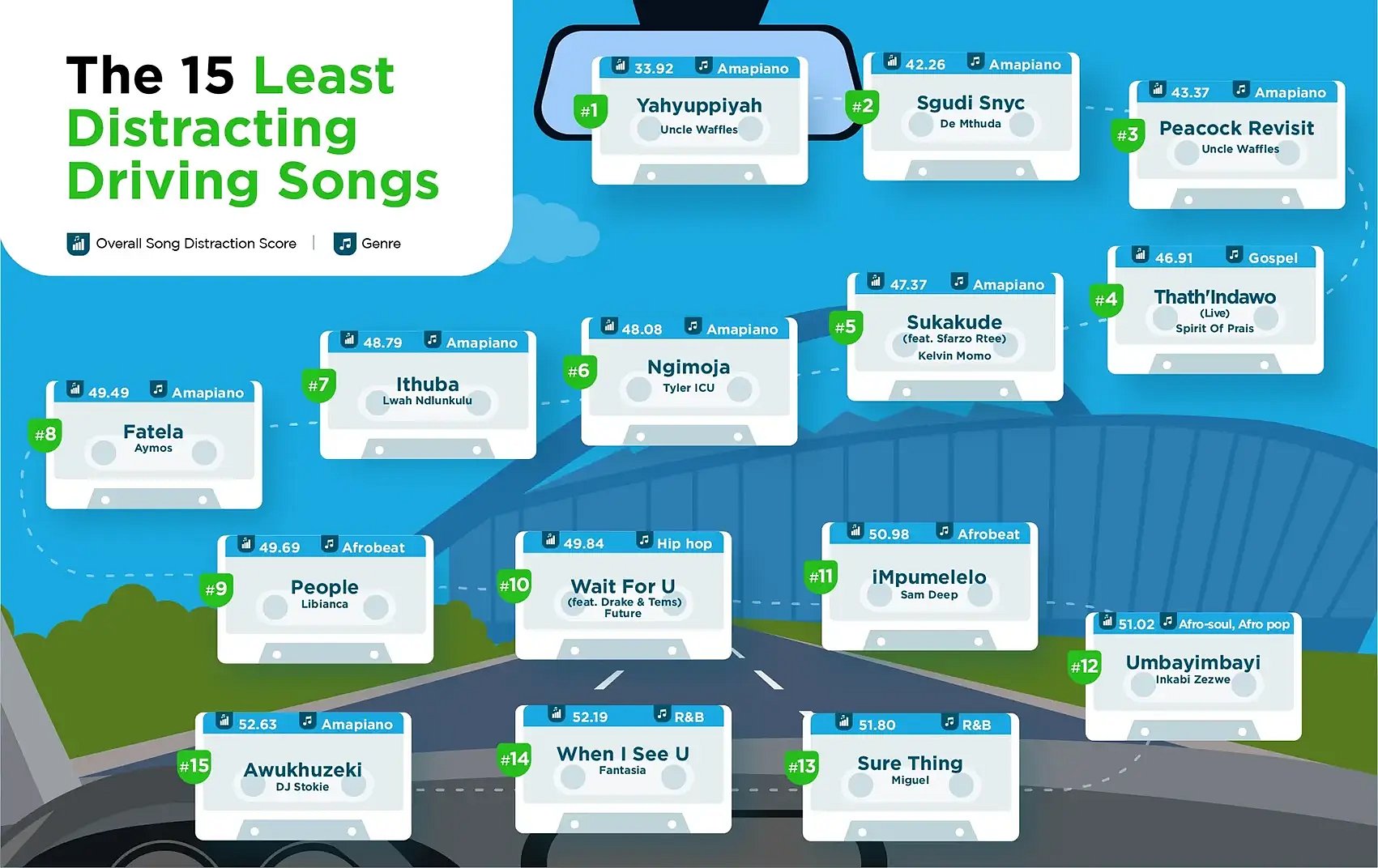
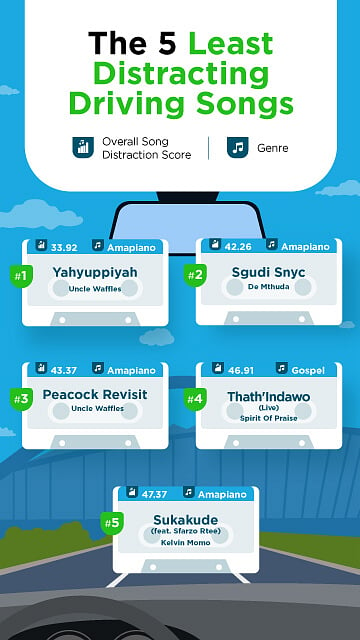
Attention drivers: If your car starts dancing instead of driving, blame it on these tunes!
Mthandeni SK's 'Paris' tops the distraction chart with the highest score of 78.62%. Dave's 'Sprinter' will race your heartbeat faster than your odometer, while Rema's 'Calm Down' ironically amps up the chaos. Soa Mattrix's 'Mina Nawe' and Gunna's 'fukumean' throw an Amapiano-hip-hop party on your steering wheel.
Be warned: these musical troublemakers could take your car for a wilder ride than you bargained for!
Mthandeni SK's 'Paris' tops the distraction chart with the highest score of 78.62%, Dave's 'Sprinter' will race your heartbeat faster than your odometer, and Rema's 'Calm Down' ironically amps up the chaos. Be warned: these musical troublemakers could take your car for a wilder ride than you bargained for!
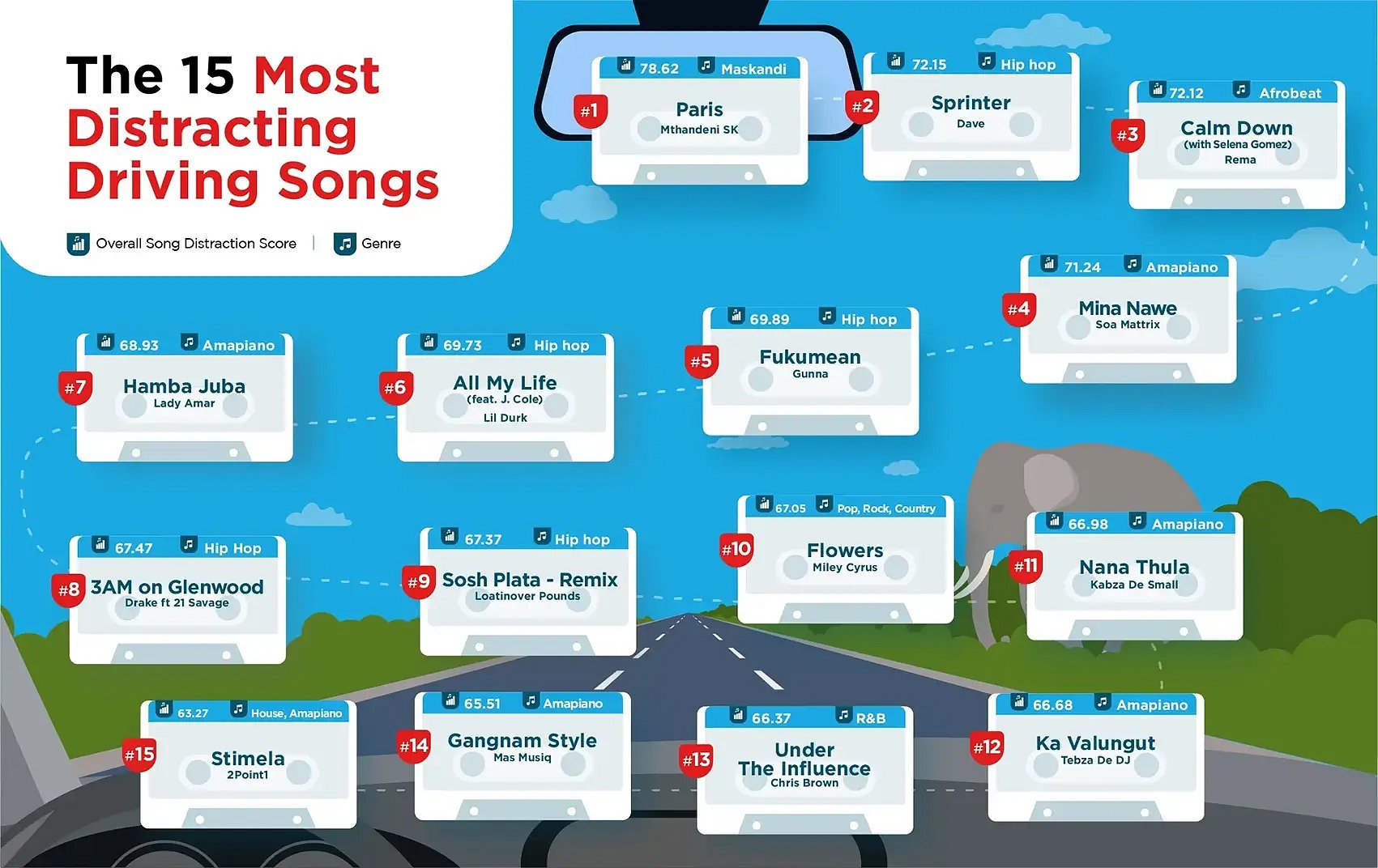
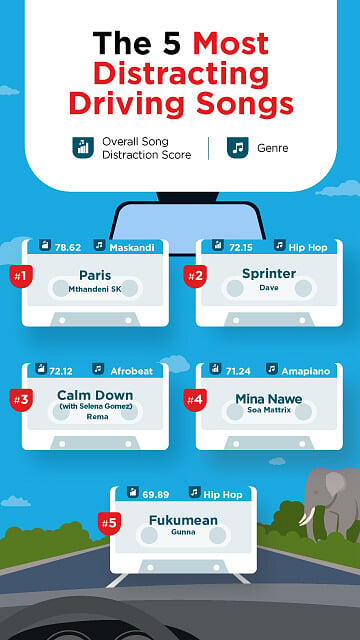
According to accident claims data for 2023, it turns out these are the areas with the least-to-most recorded car accidents.
The Northern Cape, Freestate, and Limpopo emerged as the provinces with the safest drivers, while Rustenburg, Centurion and Pietermaritzburg were the top cities.
On the other hand, the provinces of KwaZulu-Natal, Western Cape and Gauteng recorded the highest number of car accidents, with Johannesburg, Pretoria and Cape Town emerging as the cities with the least safe drivers.
| Least to Most Car accidents |
By Province | Least to Most Car accidents |
By City | |
|---|---|---|---|---|
| 1 | NORTHERN CAPE | 1 | RUSTENBURG | |
| 2 | FREESTATE | 2 | CENTURION | |
| 3 | LIMPOPO | 3 | PIETERMARITZBURG | |
| 4 | NORTH WEST | 4 | PORT ELIZABETH | |
| 5 | MPUMALANGA | 5 | BLOEMFONTEIN | |
| 6 | EASTERN CAPE | 6 | DURBAN | |
| 7 | KWA-ZULU NATAL | 7 | JOHANNESBURG | |
| 8 | WESTERN CAPE | 8 | PRETORIA | |
| 9 | GAUTENG | 9 | CAPE TOWN |
“There are several safety measures you can practice in addition to choosing non-distracting playlists to listen to while driving,” says Tyrone Lowther, Head of Budget Insurance.
“There are several safety measures you can practice in addition to choosing non-distracting playlists to listen to while driving,” says Tyrone Lowther, Head of Budget Insurance.
The following driving tips are recommended to keep you safe on the road:
The following driving tips are recommended to keep you safe on the road:
- Keep your eye on the prize: that means the road. Did you know, South Africa has one of the highest road crash rates in the world, with around 25% caused by cellphone use (according to the International Transport Forum’s (ITF) 2013 Road Safety Annual Report).
- Volume control: lower the beats and avoid a traffic jam in your mind. Loud music impairs your focus and prevents you from picking up on important traffic cues around you. So, turn down the volume and drive with clarity.
- Rhythmic restraint: watch the tempo; avoid music with slow beats when you’re tired and high-paced music when you’re all charged up. Keep it n’sync with your energy, but always drive with caution. Feeling normal? According to researchers at the London Metropolitan University, songs with a tempo of between 60 and 80 beats per minute are optimal for driving, as they closely mimic our average resting heart rate.
- Melodic mood booster: create a playlist or choose a radio station that uplifts your mood and encourages a relaxed mindset. R&B, Gospel and Amapiano are among the least distracting music genres. So perhaps tune in to Metro, Ukhozi or Kaya FM for some relaxing tunes.
- Calm commute: avoid raging symphonies or rock concerts. It’s not advisable to drive when you’re highly frustrated or angry. For example, AC/DC’s “Thunderstruck” hits 133 bpm which can set your heart rate racing!
- The quiet drive: sometimes, silence is golden. On occasion, you should try to tune out entirely to ease the stress and enjoy a peaceful drive without any music.
- Weather watch: be prepared and keep informed about the weather while driving. If possible, avoid driving when there’s a storm brewing, as this can increase anxiety and nervousness.
- Emergency essentials: keep vital numbers close at hand. Save your insurer’s details to your phone, and prep for common auto hiccups so you can get back on the road quickly and safely.
- Speed safety: adjust your speed and distance accordingly. Wet or busy roads demand caution. Drive smart and avoid speeding or sudden braking.
Sources:
Sources:
Spotify playlists:
- Spotify 50 - Top 50 Artists of 2023 South Africa / Most Streamed: https://open.spotify.com/playlist/37i9dQZF1DXbE0Ss55ztHK
- Spotify 50 - Top 50 Tracks of 2023 South Africa / Most Streamed: https://open.spotify.com/playlist/37i9dQZF1DX9yAilWlH4gK
- Top Artist Albums In South Africa: https://open.spotify.com/playlist/5G5wfhZcDndKvMU8ZEkXQm - Full song list (680 songs) built from the corresponding albums within Spotify's top 50 list 'Top Artists of 2023 South Africa' above
Spotify API song analysis tool (Sort Your Music):
Spotify API song analysis tool (Sort Your Music):
Spotify API song analysis tool (Sort Your Music): http://sortyourmusic.playlistmachinery.com/
Methodology:
Methodology:
Sort Your Music provides data analysis of the songs in your selected Spotify playlist based on a number of song attributes including:
- Beats Per Minute (BPM) – The higher the value, the quicker the song.
- Energy – The higher the value, the more energetic the song.
- Danceability – The higher the value, the more compelling it is to dance to the song.
- Loudness – The higher the value, the louder the song.
Using Spotify wrapped data for 2023, we analysed the most popular songs and album tracks from South Africa’s Top Tracks 2023 and Top Artists 2023 and scored them against the four categories above.
Each factor was given a ‘distraction score’ from 0 to 100, and these were then averaged together and written as a percentage to get the overall distraction score, with 100 being the most distracting.